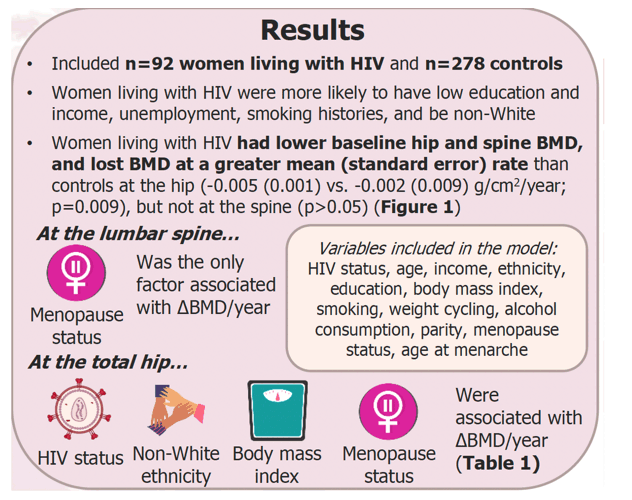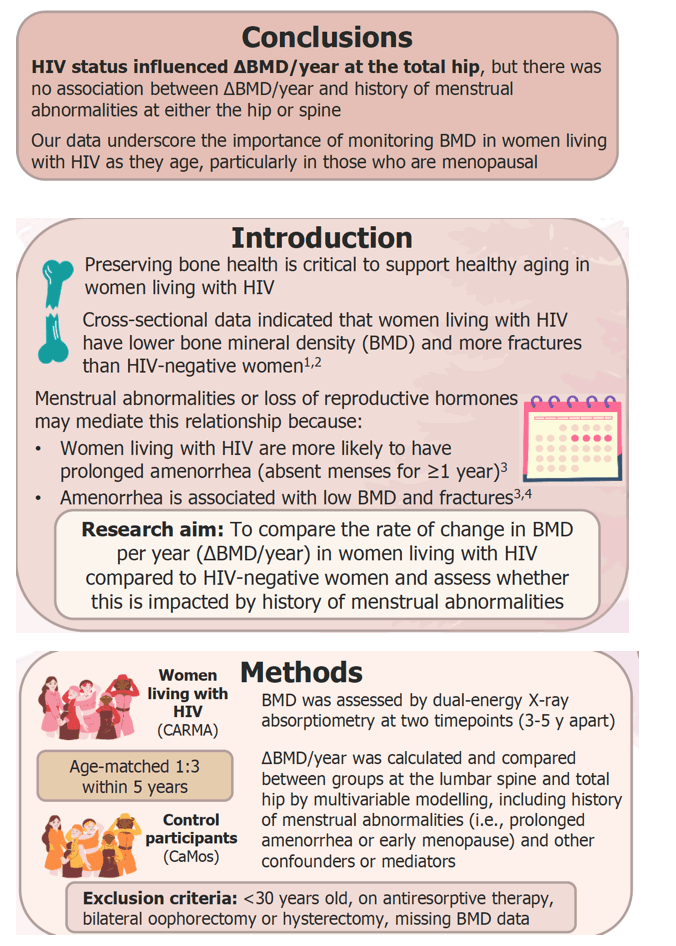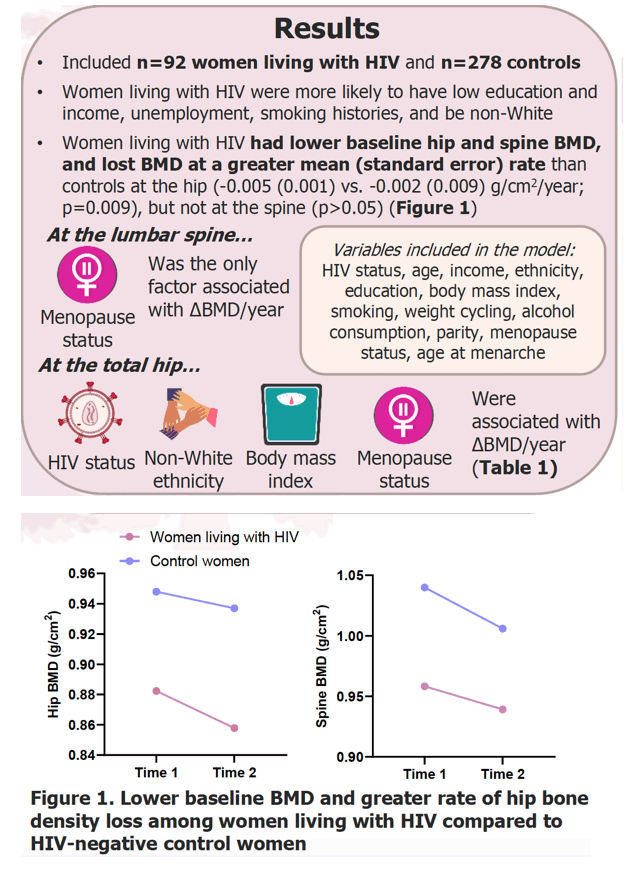 |
 |
 |
| |
Assessing the Impact of HIV Status and Menstrual Abnormalities on Longitudinal Bone Density Loss in Women Living With and Without HIV
|
| |
| |
Aging Workshop Oct 14-15 2022
Shayda A. Swann1,2, Elizabeth M. King2,3,4, Jerilynn C. Prior1,2,5,6, Claudie Berger7, Ulrike Mayer3, Neora Pick2,8, Amber R. Campbell2,8, Hélène C. F. Côté2,9,10, Melanie C. M. Murray1,2,8 and the CIHR Team on Cellular Aging and HIV Comorbidities in Women and Children (CARMA, CTN 277)
1. Experimental Medicine, University of British Columbia (UBC), Vancouver, Canada; 2. Women's Health Research Institute, Vancouver, Canada; 3. Department of Medicine, UBC, Vancouver, Canada; 4. Faculty of Health Sciences, Simon Fraser University, Burnaby, Canada.
5. Centre for Menstrual Cycle and Ovulation Research, Endocrinology and Metabolism, UBC, Vancouver, Canada; 6. School of Population and Public Health, UBC, Vancouver, Canada; 7. Research Institute of the McGill University Health Centre, McGill University, Montreal, Canada; 8. Oak Tree Clinic, BC Women's Hospital and Health Centre, Vancouver, Canada; 9. Department of Pathology and Laboratory Medicine, UBC, Vancouver, Canada; 10. Centre for Blood Research, UBC, Vancouver, Canada

ABSTRACT
Results: Ninety-two WLWH and 278 controls were included in this analysis. The median [IQR] age was 49.5 [41.6 to 54.1] and 49.0 [43.0 to 55.0] years for WLWH and controls, respectively. WLWH were more likely to have < high school education, income <$20,000 CAD/year, unemployment, past/present smoking history, and be non-White. WLWH were more likley to have past/present menstrual abnormalities (21.7% vs. 4.3%; p<0.001). Participants were similar with respect to BMI, alcohol consumption, age at menarche, parity, and history of weight cycling. Most WLWH (79.3%) had undetectable viral loads (<40 copies/ml). In adjusted analyses, HIV status (β=-0.004 (95%CI -0.007 to -0.0008) g/cm2/year; p=0.015) and being menopausal (β=-0.007 (-0.01 to -0.005) g/cm2/year; p<0.0001) were independently associated with losing total hip BMD, whereas non-White ethnicity (β=0.004 (0.0009 to 0.007) g/cm2/year; p=0.011) and higher BMI (β=0.0003 (0.000 to 0.0004) g/cm2/year; p=0.005) were associated with gaining hip BMD. At the spine, menopause status was the only variable associated with losing BMD (β=-0.01 (-0.01 to -0.006) g/cm2/year; p<0.0001). Menstrual abnormalities were not associated with ΔBMD/year at either the hip or spine.
Conclusions: After adjustment for confounders, HIV status negatively influenced ΔBMD/year at the total hip, but there was no association between ΔBMD/year and history of menstrual abnormalities at either the hip or spine. This is in contrast with cross-sectional data, perhaps because participants with amenorrhea have since resumed menses and normalized their rates of bone loss. Our data underscore the importance of monitoring BMD in women living with HIV as they age, particularly in those who are menopausal. Finally, our analysis identified BMI as a key factor affecting ΔBMD/year, emphasizing the importance of nutrition in preserving bone health.



|
| |
|
 |
 |
|
|